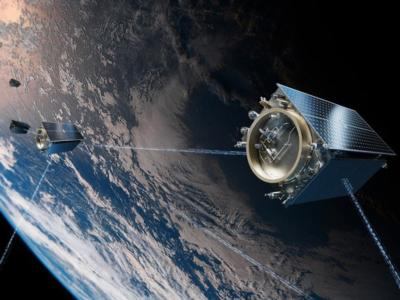Sun, May 04, 2025
Lockheed Martin is Happy to Stick By Their Partners for Future Launches, Too
A Firefly Alpha rocket bearing a Lockheed Martin demo satellite failed to reach orbit earlier this week, after a previous scrub by ground equipment.

The FLTA0006 mission was going just fine and dandy for about two and a half minutes, when a cloud appeared between the stages, followed by a puff of debris as the upper stage continued upwards. While everything remains to be hashed out in the usual investigative process, the failure struck many in the space hobby-sphere as unusual. The trail of vapor didn’t immediately appear to cause a real mission-ending issue, as the upper stage separated and fired for a full six-minute burn. The upper stage then made its way to orbit, according to Firefly, where it would normally have begun deploying its payload. Onlookers ended up losing the feed shortly after that, when the company cut the livestream.
Firefly followed up on the issue shortly after, announcing the launch “experienced a mishap between stage separation and second stage ignition that led to the loss of the Lightning engine nozzle extension, substantially reducing the engine’s thrust.” That allowed it to get up to almost 200 statute miles in altitude, while failing to attain orbital velocity. The end result was the first stage and its payload falling back down to Earth to splash down in a “cleared zone north of Antarctica.” The current thesis assumes that the engine nozzle extension for the first stage was damaged in the incident, leading to a much lower power output than assumed for a nominally functional system.
Its payload was an LM 400 Tech Demo Satellite from Lockheed Martin, and an early example of the type. The LM 400 is intended to be a modular, mid-size, multi-mission satellite bus that can be pressed into service across a whole swath of military, commercial, and civil tasks from remote sensing, communications, imaging, survey, or whatever else clients desire. Lockheed doesn’t seem too brokenhearted at the mission failure, saying they’d continue onwards with Firefly for future work. Lockheed spokesman Chip Eschenfelder said “Navigating risk and going fast are part of these self-funded demonstrations, and the knowledge we’ve gained already from the LM 400 production and processing will also benefit future customer missions.”
More News
“We have seen astounding demand for the G800, and the entire Gulfstream team is excited to begin making deliveries to our customers. The G800 is entering service with extraor>[...]
Aero Linx: Recreational Aviation Australia (RAAus) Recreational Aviation Australia is progressively working towards improving safety outcomes through a holistic approach to safety >[...]
Classic Klyde Morris From 11.07.16 (and Remembering Bob...) FMI: www.klydemorris.com>[...]
Also: GADFLY AI-Driven Engine Analysis, Knockoff Iranian Drones, Russian Surveillance, 40 NASA Missions Chopped This year’s Zenith Homecoming event will soon be taking off at>[...]
Also: H55 Completes American Tour, Robinson Trade-Ins, Retired AV-8B Harrier, NS-35 Mission Organizers of the iconic annual Air Race Classic will soon be opening registration for t>[...]
 Aero-News: Quote of the Day (08.28.25)
Aero-News: Quote of the Day (08.28.25) ANN's Daily Aero-Linx (08.28.25)
ANN's Daily Aero-Linx (08.28.25) Classic Klyde Morris (08.25.25)
Classic Klyde Morris (08.25.25) Airborne 08.25.25: Zenith Homecoming, VP Racing, Affordable Flying Expo 2025
Airborne 08.25.25: Zenith Homecoming, VP Racing, Affordable Flying Expo 2025 Airborne 08.22.25: ARC Spinoff, Nat'l Championship Air Races, Hawkins Accident
Airborne 08.22.25: ARC Spinoff, Nat'l Championship Air Races, Hawkins Accident



